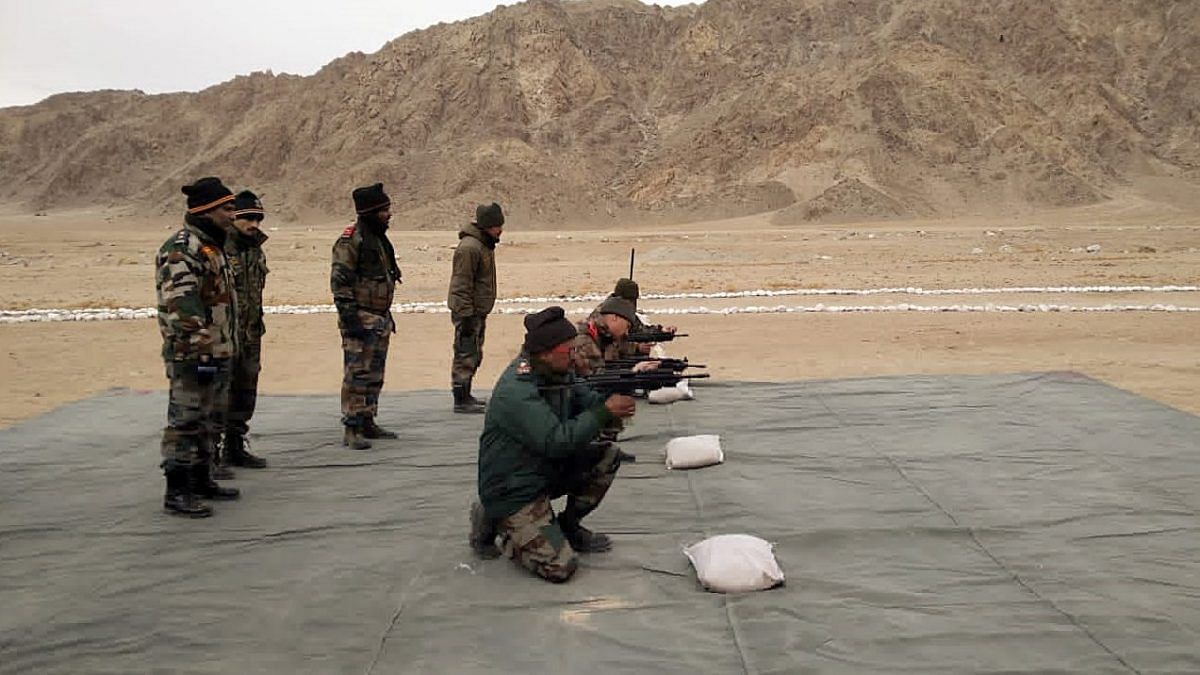Why the successful trials of a desi carbine is such a big deal |
India Today Insight
In mid-June this year, a Belgian arms manufacturer walked out of a contract to supply small arms to India’s covert paramilitary, the Special Frontier Force (SFF). FN Herstal had signed a contract worth around Rs 70 crore to supply its P90 personal defence weapons and two variants of its SCAR assault rifles to the SFF, a unit made up of ethnic Tibetans. The exact reasons for FN’s refusal to supply the arms are unclear, but sources say it had to do with the firm’s concerns that their products would be used in Jammu and Kashmir. The SFF—deployed by the government in late August to occupy strategic heights in eastern Ladakh along the LAC with China—is now believed to be looking to acquire US-made assault rifles. This would not be the first time a global firm has expressed reservations about supplying small arms to India. Nor is it the first time that the lack of indigenously-developed weapons have been the cause of national embarrassment for India.
After the 26/ 11 Mumbai terror attacks over a decade ago, several state police forces looked for imports to replace their World War-II vintage small arms arsenal. The German government denied the sale of their popular Heckler & Koch MP5 sub-machine to states like Andhra Pradesh, Maharashtra, Gujarat, Manipur, Odisha and Jammu and Kashmir, questioning their human rights record.
In early 2011, at least one chief minister, Narendra Modi, had raised the issue of this blacklist at a meeting of CMs in the national capital. The MHA then explored creative ways to circumvent the ban, including importing MP5s and re-distributing it to the states or advising states to shop from countries like Russia, the US and Italy.
This is why the successful trials of a DRDO designed carbine this year, is such a big deal. The Joint Venture Protective Carbine (JVPC) is the first ever indigenously designed and produced Indian carbine to be cleared for induction into the Indian armed forces and the central police and paramilitary forces. The JVPC has a 30-round box magazine with a rate of fire of 800 rounds per minute.
The carbine, produced in collaboration with the state-owned Ordnance Factory Board (OFB), successfully completed its user trials on December 7, meeting all the army’s General Staff Qualitative Requirements. These were the last set of the trials which were carried out in extreme temperature conditions in summer and winter—the weapon performed with zero stoppages. In August this year, the JVPC also passed MHA trials presided by a full board of the MHA headed by the National Security Guard (NSG) and including representatives from all the Central Armed Police Forces (CAPFs). The weapon designed by the DRDO’s Pune-based Armaments Research and Development Establishment (ARDE) is being produced at the OFB’s Small Arms Factory in Kanpur and ammunition made by the Ammunition Factory Kirkee.
It has ended the conundrum of a country which, despite developing its own ballistic missiles and nuclear-powered submarines, has been struggling to develop a low-technology carbine—a compact weapon firing a pistol cartridge. Over the past 70 years, India has imported these weapons—building the British-designed Sterling under license at the Small Arms Factory Kanpur in the early 1960s. The lack of an indigenous alternatives to this World War-II era weapon meant that police, paramilitary and armed forces special units had to import alternatives. The arrival of the JVPC, government source say, has the potential to end the monopoly enjoyed by the MP5, first imported by elite units like the Special Group and the NSG in the early 1980s. The DRDO-designed weapon that fires a 5.56x30 mm cartridge out to 200 metres is far more effective than the 9 mm subsonic cartridge fired by the MP5. Its 5.56x30 bullets can penetrate a 3.5 mm mild steel plate and Level III body armour. NSG personnel during the 26/11 attacks noted that their MP5’s subsonic 9 mm cartridge was useless against well entrenched terrorists.
The JVPC’s success comes after a decade of languishing in development hell. The collaborative effort between the DRDO and OFB came as a result of the Army’s 15-year quest to replace the World War-II vintage 9 mm Sterling carbine. The Indian National Small Arms Systems (INSAS) project, which began in March 1982, aimed to give the army a standard assault rifle, a carbine and a light machine gun. The rifle was inducted into service in 1996 but the carbine failed trials owing to problems of firing a larger 5.56x45 cartridge from a smaller barrel—high sound and a ‘high jump in automatic burst’. The OFB and DRDO began to develop competing successor carbines—the MSMC and the ‘Amogh’, both chambered to fire a smaller 5.56x30 MINSAS cartridge. The OFB-developed ‘Amogh’ carbine failed to enter army service but saw limited induction into the Coast Guard and state police units. The DRDO and OFB teamed up five years ago, basing their joint efforts on the more promising DRDO carbine, renamed the JVPC. While it underwent trials, the weapon saw limited sales to state police units, including Delhi, Punjab and Chhattisgarh.
The non-standard pattern of JVPC ammunition could however be problematic. While the army will buy 5,000 JVPCs, it wants the bulk of its carbines to be chambered for the bigger NATO 5.56x45 cartridge. The army’s acquisition of 93,895 such carbines from Caracal of the UAE is stuck pending defence ministry approval. The army has a still bigger requirement for 3.5 lakh carbines which will be procured domestically. The OFB and DRDO have fielded another carbine for this requirement. It remains to be seen whether this product will have the JVPC’s resilience.
The first indigenously designed and produced carbine to pass trials will reduce India’s humiliating dependence on imported small arms

www.indiatoday.in







